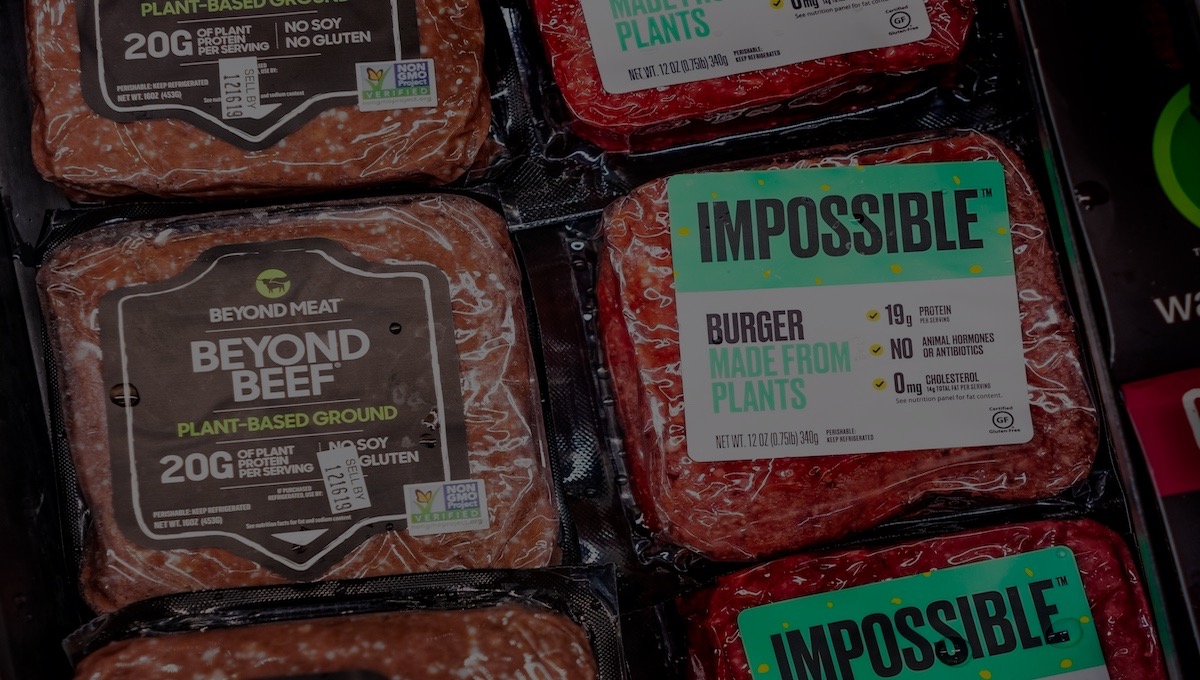In this article, we will be discussing the extraordinary rise of the alternative meat industry, and how it is an existential threat to the incumbent meat producers.
The world loves meat
Global meat consumption has been trending up in the past decades. As countries become more prosperous, their population consumes more meat.
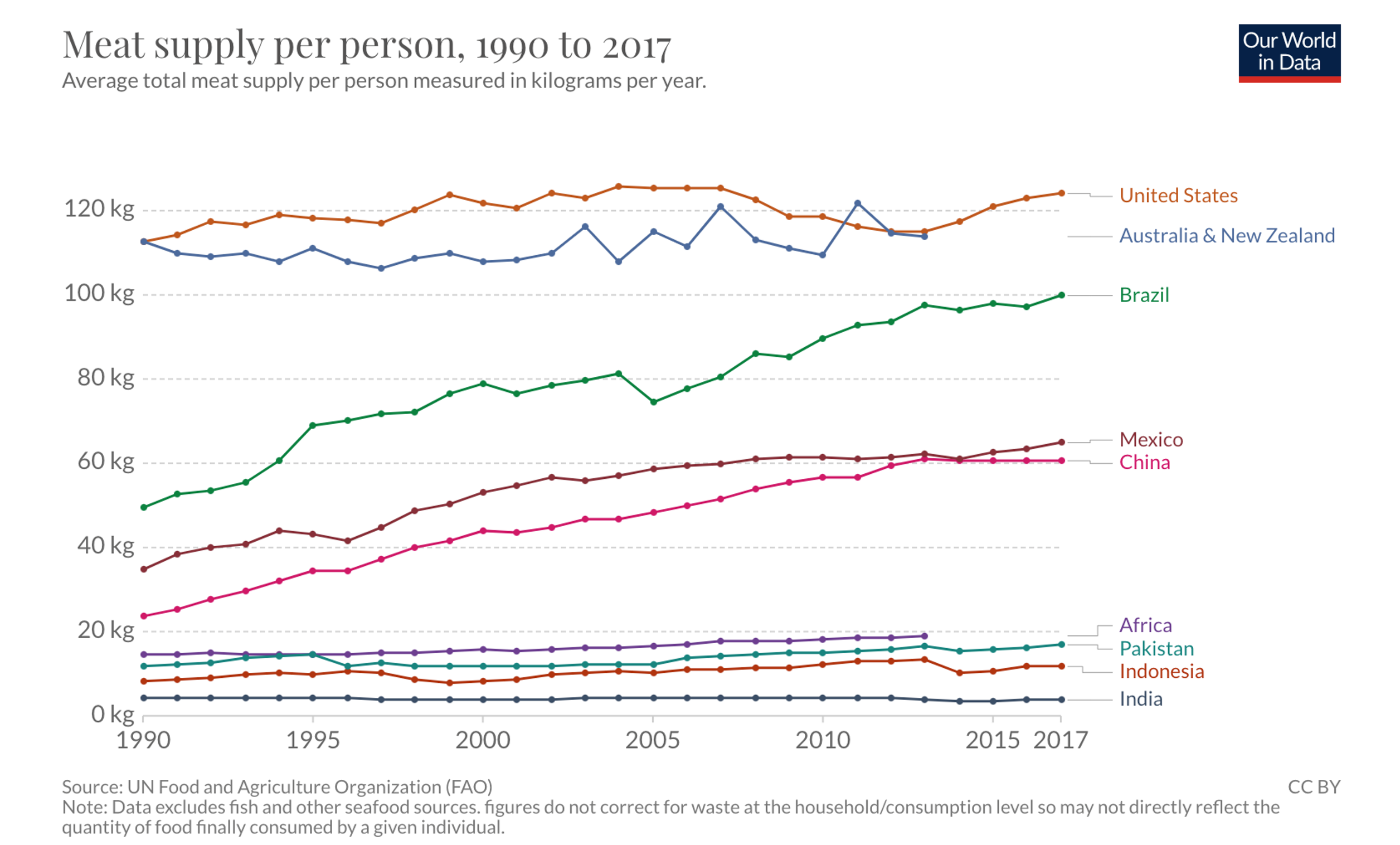
- The US tops the list (along with Australia and New Zealand) at 124 kg of meat per person per year (in 2017). That’s 2X that of China’s and 30X that of India’s per capita consumption!
- Brazil’s meat consumption has increased 2X since 1990.
- Mexico’s and China’s consumptions have also roughly doubled.
- The exception to the trend is India. Despite its GDP and population growth, India has not experienced much change in meat consumption (about 4 kg per person) since 1961, due to the dominant lactovegetarian preferences.
Fast forward another few decades: as the world’s population continues to grow, and as the appetite for meat increases, more resources will be required to produce meat.
It takes a lot of energy, water, and antibiotics to produce meat
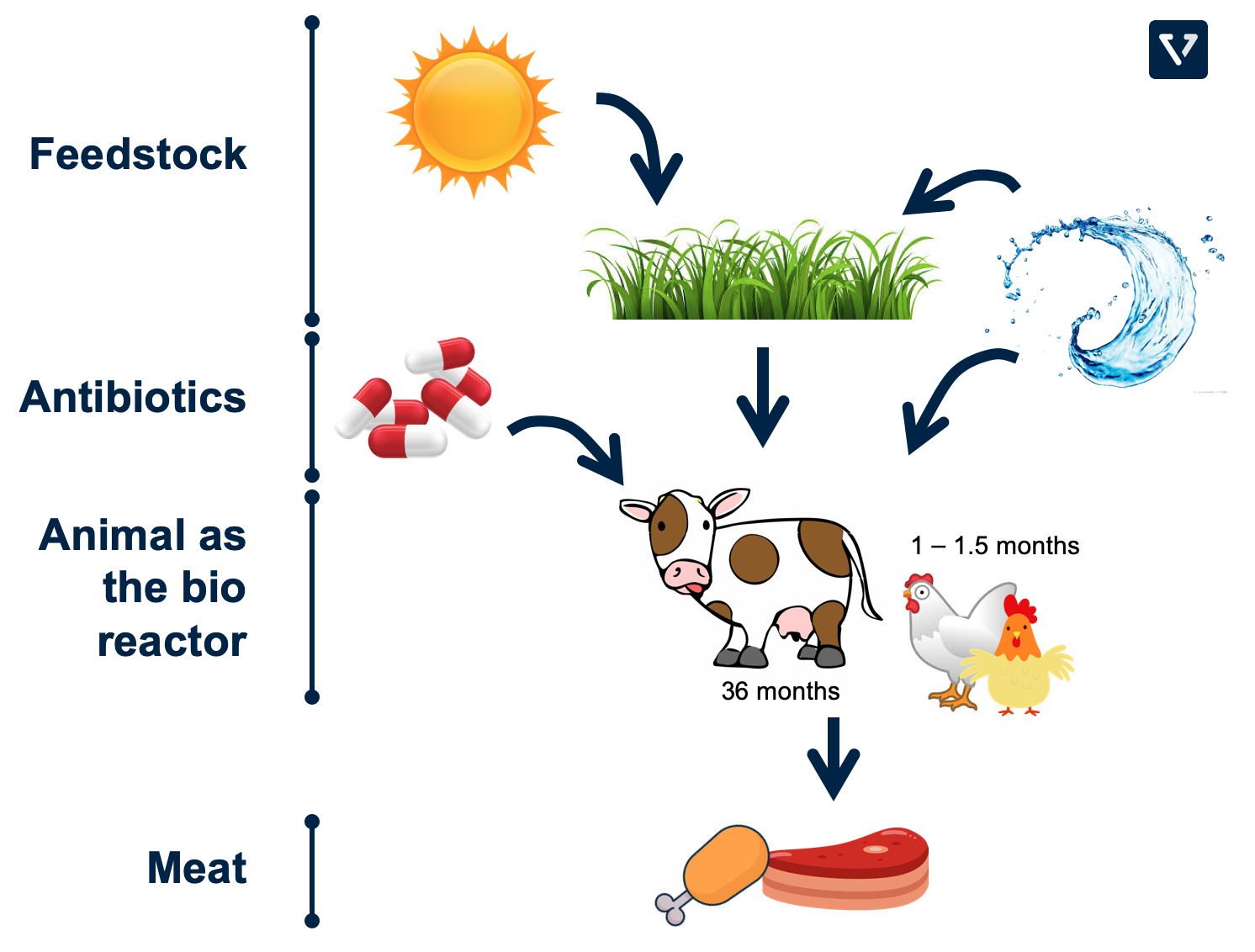
The meat production is a highly inefficient process where you input water, energy, and feedstock from plants into a bioreactor (the animal). This process takes anywhere from months to years before the final product is produced. See Figure 2, for an illustration of the material balance.
- Energy from the sun is converted into biomass (plants) via photosynthesis (which has an efficiency of only 3 – 6%).
- These plants are then used as feed for the animal (could be chicken, pig, cows, etc) for a period of time until the animal is ready for harvesting. The time period varies depending on the animal: cows typically are slaughtered at the age of 36 months, while chickens are harvested at about 1 – 1.5 months of age.
- During this period, these livestock are typically stored in very close quarters to maximize efficiency. Because of this, use of antibiotics is necessary to minimize risk of disease spreading (and also to maximize growth while consuming less feed…). The use of antibiotics in meat production is so prevalent that in the US, 80% of antibiotics sold are for use in animal agriculture.
See Figure 3 for the different efficiencies number. All the above is because we are unable to produce meat without the animal. Beef production is the most inefficient at 1.9% efficiency. This means for every 100 calories of feed (plants) we feed the livestock, only 1.9 calories is generated.
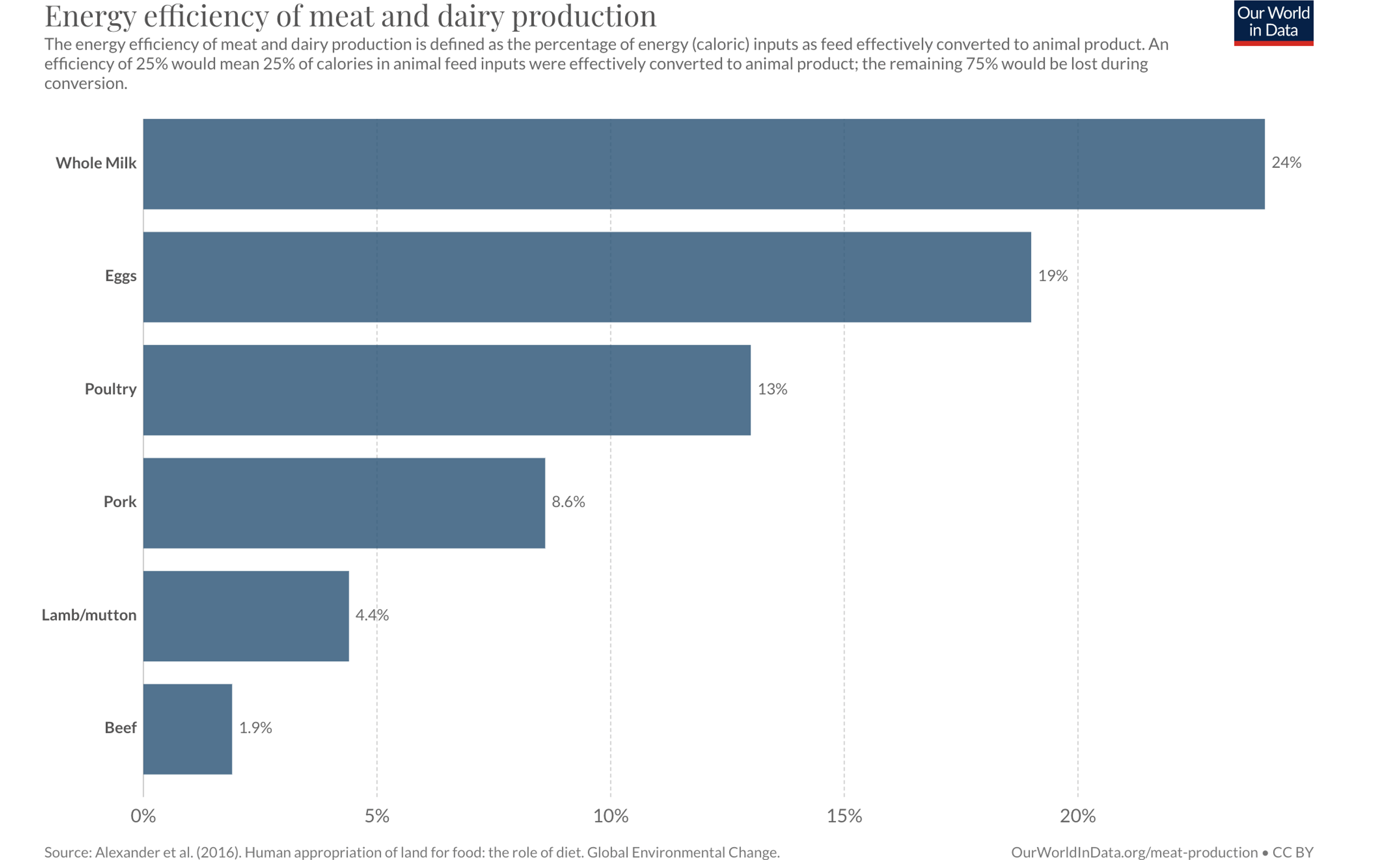
What if we can eliminate the animal (the bioreactor) from the process altogether? What if we can replace the animal with, well… factories? That is what is starting to happen.
The Rise of the Alternative Meat Industry
The need for artificial meat is not only due to drive for efficiency and the fight against global climate change, it is also accelerated by the COVID-19 disruptions in the meat supply chain.
Alternative meat: producing meat without the animal
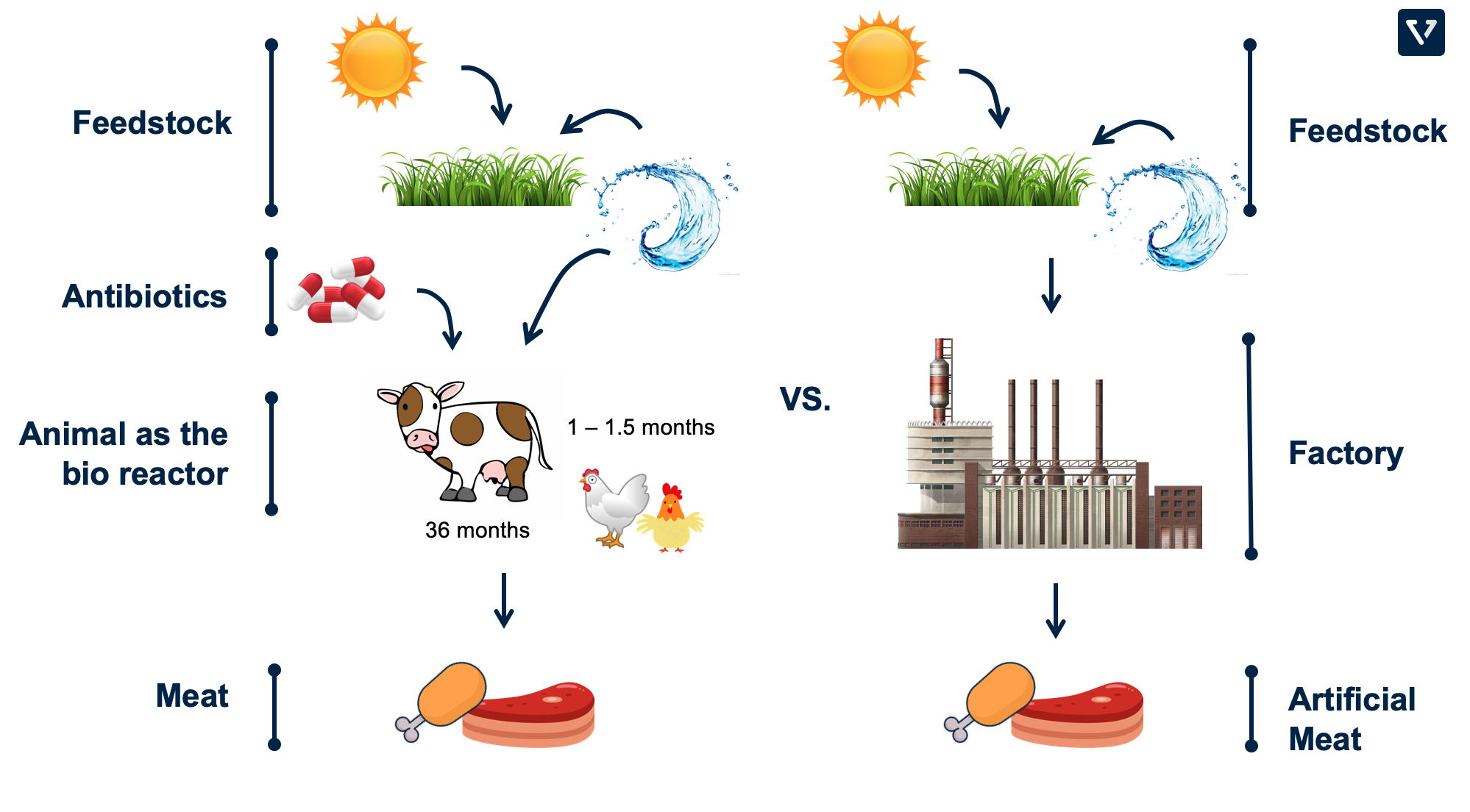
To produce meat without animal involvement, there are two approaches (see Figure 4):
- Use plant based proteins to simulate texture and taste of meat. This is the more traditional approach of creating artificial meat.
- Use meat cells grown in the laboratory. The cost of this approach is still extremely high, and the safety of the approach is still unproven. It might still be a decade or more before this approach is mainstream.
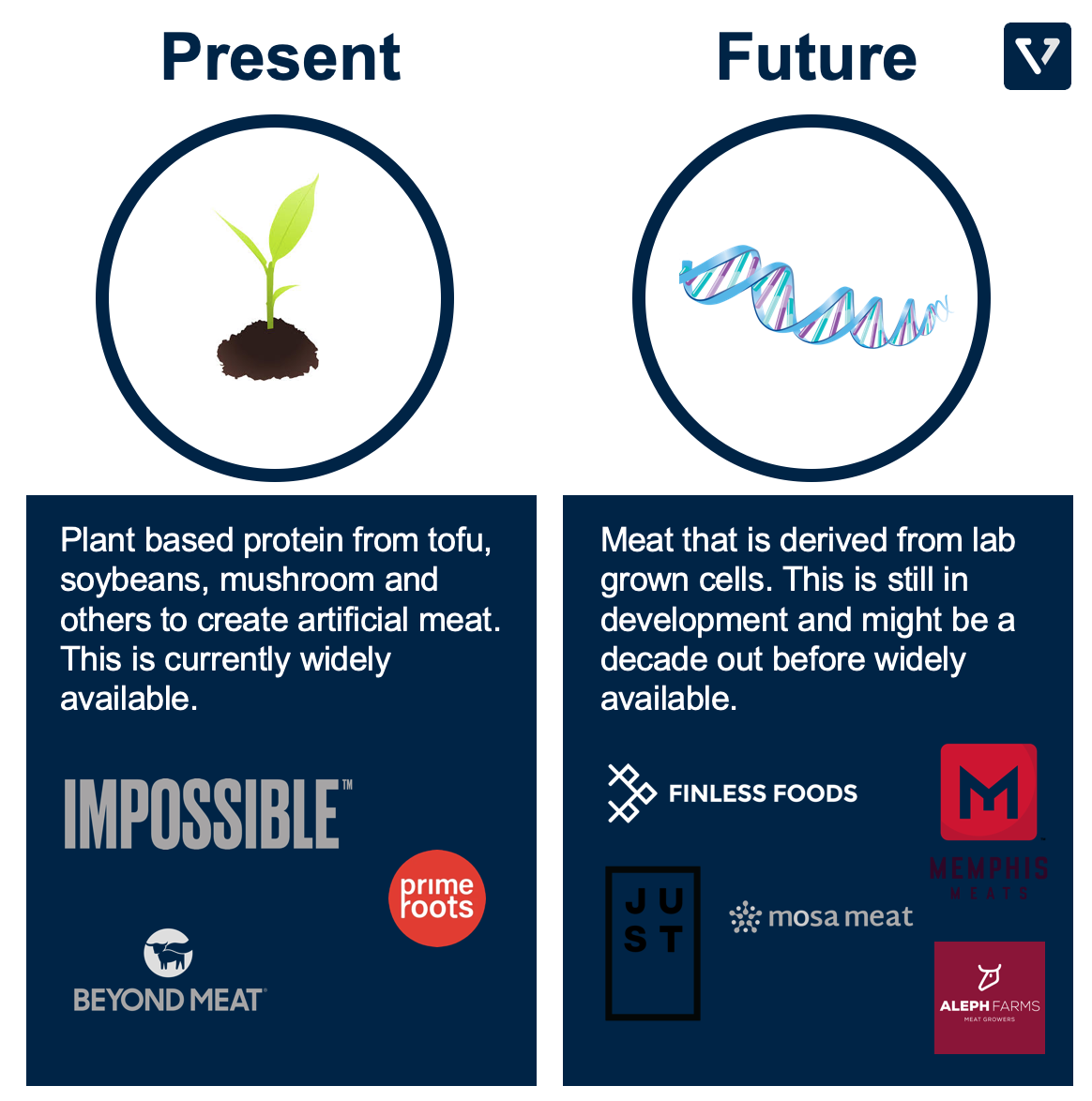
Among new companies operating in this space, Beyond Meat (ticker: BYND) and Impossible Foods are likely the two largest companies. Both are pursuing artificial burgers (replacing beef with plant based protein). Beyond Meat is currently a public company with a market cap of more than US $10 billion, while Impossible Burger has raised more than US $1.5 billion in private funding, valuing the company at more than US $4 billion (it’s still a private company).
These two companies employ similar strategies:
- They use plant based proteins to replace the meat (with beef as the first application).
- They started with the burger market, because the artificial meat cannot replicate the structure of unprocessed meat (example: steak), and therefore is only suitable for processed meat applications. Both companies have now expanded to sausages, tacos and meatballs.
- Both have aggressively pursued retails strategies, partnering with fast food chains (Burger King, KFC, Tim Hortons, Subway) and grocery retailers (WalMart and Kroger).
Artificial Meat offers improved efficiency
A study performed on Beyond Meat’s burger production system concluded that Beyond Burger generates 90% less greenhouse gases, has >99% less impact on water scarcity and 93% less impact on land use. A similar study performed on Impossible Burgers discovered similar levels of reduction in environmental impacts.
The removal of animal involvement from meat production can significantly improve efficiency and reduce carbon print of meat production.
But do they taste good?
Despite the environmental benefits, for these artificial meat companies to succeed and achieve large commercial adoption, they have to taste good; at least good enough to be a substitute of real meat. We tried both Impossible’s and Beyond’s burgers. Impossible burger wins the taste contest hands down. This is in agreement with other taste tests. Subjectively, Impossible Burger’s tastes about 80 – 90% of the real thing, which might just be close enough to convert the general population.
Saving the world is great – but is it good business?
Meat is big business. The United States’ alone is about US $270 billion of the US $1.4 trillion global meat industry (or 19%). Currently, alternative meat products’ total addressable market is only US $14 billion (or 1%). This is projected to increase to US $140 billion in the next decade – or 10% of the total meat market.
The market is large and is expanding, and Beyond Meat’s much improved processing efficiency gives it higher gross profit levels. The novelty of the product and the strength of the brand also gives it pricing power – Beyond Meat’s product commands premium pricing compared to traditional meat.
As a result, Beyond Meat’s gross profit margin averaged at 35% over the past 5 quarters (see Figure 6 below for gross profit margins comparison). That is about 3X of the largest traditional player, Tyson Foods.
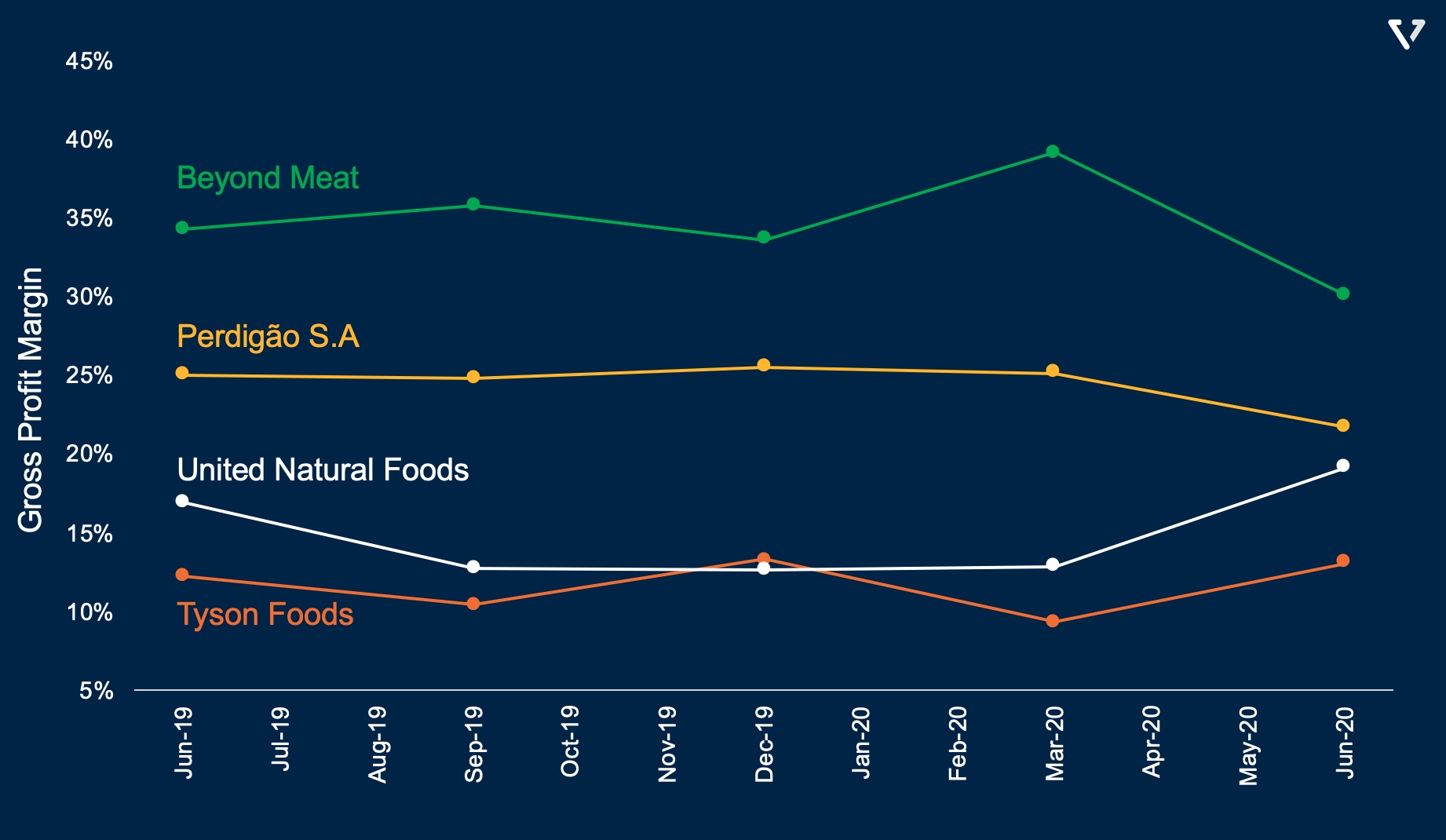
To the traditional meat producers, the threat of artificial meat is existential. Beyond Meat is a new entrant. It has not achieved scale in production and therefore has a lot of room to reduce costs. Yet, it’s already 2X more profitable than one of the largest most efficient meat producers in the world (Tyson Foods). The incumbents are aware of this threat. All of the major meat producers are conducting research to develop their own version – to be sold under existing brands.
From Q3 2020 earnings call:
“Alternative Protein remains a top growth priority for Tyson Foods. We saw growth in distribution and velocity during the quarter while introducing two new plant-based protein offerings to market —- a spicy nugget and a whole grain tender — both under our Raised and Rooted brand. We are focused on our new product launch timing to drive category growth in line with customer and consumer needsâ€
It is likely that there will be many entrants in the artificial meat space. A lot of the aforementioned private companies will go public, and the traditional players will develop their own solutions. Fast forward 5 – 10 years, where artificial meat is no longer new and the product is commoditized – can Beyond Meat maintain its brand and pricing premium?
Right now, investors’ hopes are placed on the growth of Beyond Meat, as it is the only publicly traded company solely focused in this space. As a result, the valuation is through the roof. Beyond Meat’s next 12 month P/E is at 278x, while the incumbents range from 5 – 28x.
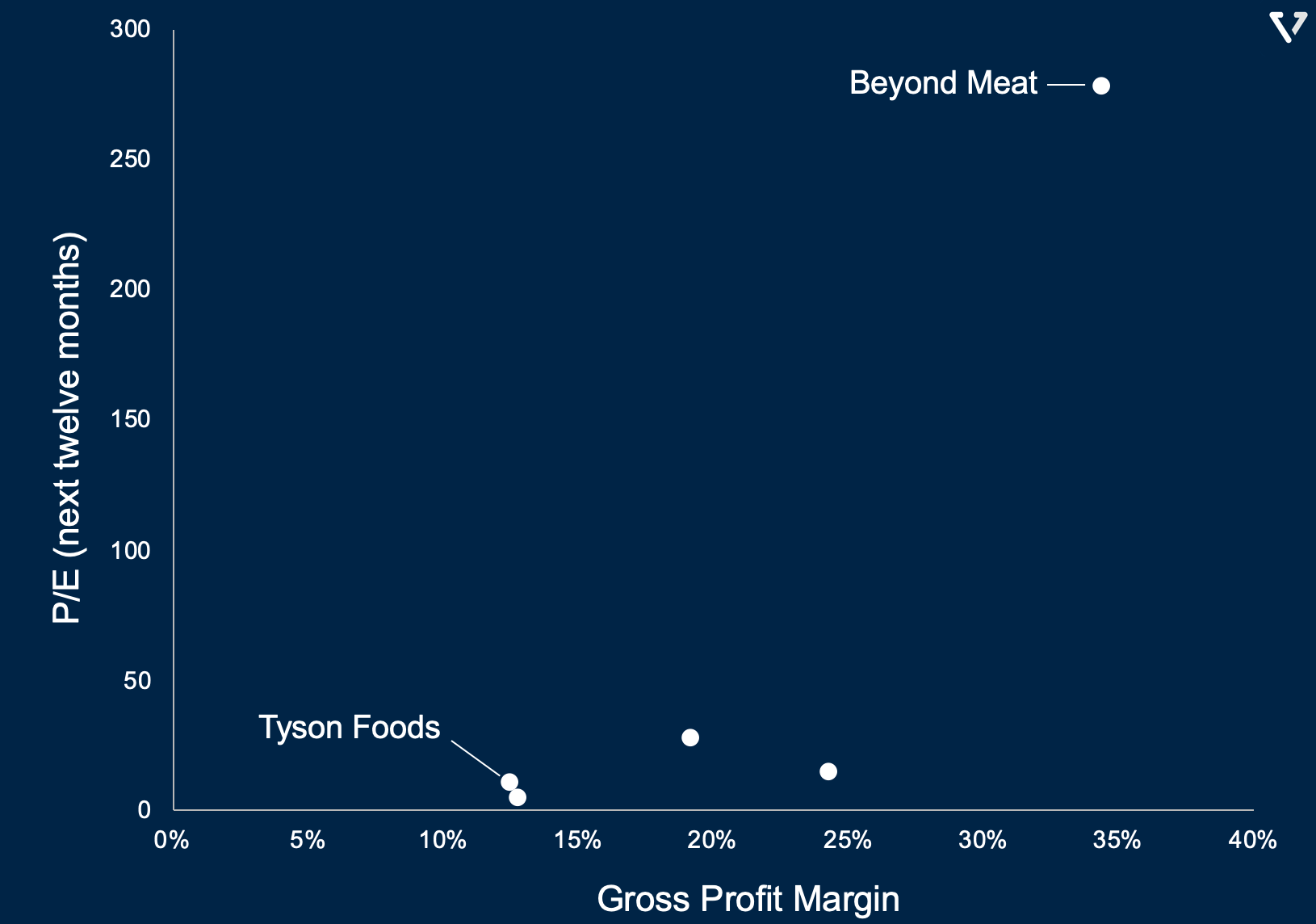
[mc4wp_form id=”1064″]














